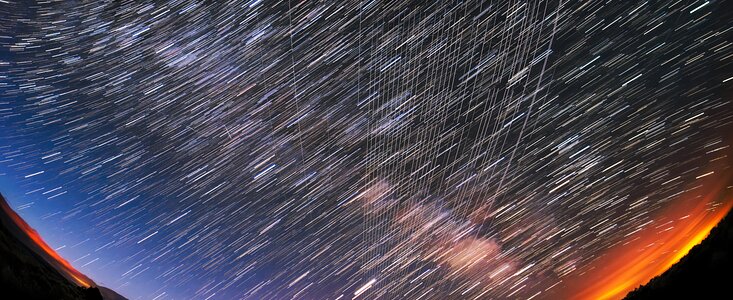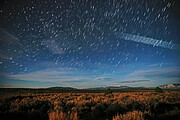- News
- Science
- Scientific Bodies
- Divisions
- Commissions
- Commission A1 Structure
- Commission A2 Structure
- Commission A3 Structure
- Commission A4 Structure
- Commission B1 Structure
- Commission B2 Structure
- Commission B3 Structure
- Commission B4 Structure
- Commission B5 Structure
- Commission B6 Structure
- Commission B7 Structure
- Commission C1 Structure
- Commission C2 Structure
- Commission C3 Structure
- Commission C4 Structure
- Commission C5 Structure
- Commission D1 Structure
- Commission E1 Structure
- Commission E2 Structure
- Commission E3 Structure
- Commission E4 Structure
- Commission F1 Structure
- Commission F2 Structure
- Commission F3 Structure
- Commission F4 Structure
- Commission G1 Structure
- Commission G2 Structure
- Commission G3 Structure
- Commission G4 Structure
- Commission G5 Structure
- Commission H1 Structure
- Commission H2 Structure
- Commission H3 Structure
- Commission H4 Structure
- Commission J1 Structure
- Commission J2 Structure
- Commission J3 Structure
- Commission X1 Structure
- Commission X2 Structure
- Past Commission Organising Committees
- Working Groups
- Centres
- Scientific Meetings
- Rules & Guidelines
- General Assemblies
- Meeting Proposals
- Future IAU Meetings
- General Assemblies
- EC Meetings
- Officers' Meetings
- Regional Meetings
- Symposia
- Focus Meetings
- Institutional Meetings
- IAU Offices Meetings
- IAU-Sponsored Meetings
- Letters of Intent submitted for 2024
- Letters of Intent submitted for 2023
- Letters of Intent submitted for 2022
- Letters of Intent submitted for 2021
- Letters of Intent submitted for 2020
- Past IAU Meetings
- Templates
- Other Meetings
- Grants & Prizes
- Scientific Bodies
- Publications
- IAU Publications
- IAU Strategic Plan
- Symposia
- WGSBN Bulletins
- Regional Meetings
- Information Bulletins/Catalyst
- E-Newsletters
- Focus Meetings
- Transactions A
- Transactions B
- Related Publications
- GA Newspapers
- CAPjournal
- IAU Books
- Brochures
- IAU Offices
- WG Reports
- Commission Reports
- Division Reports
- Past IAU Publications
- Rules, Guidelines and Instructions for Proceedings
- Publishers
- IAU Publications
- Administration
- About the IAU
- Statutes & Rules
- IAU Policies
- IAU Executive Bodies
- IAU Secretariat
- Resolutions
- Members Administration
- Administrative Dates & Deadlines
- International Organisations Relations
- Donate to the IAU
- Training in Astronomy
- Astronomy for Education
- Astronomy for Development
- Astronomy for the Public
- Office for Astronomy Outreach
- FAQ
- Themes
- Satellite Constellations
- Astronomy in Everyday Life
- How to Report a Discovery
- Careers in Astronomy
- Defining our Place in the Cosmos
- The Constellations
- Light Pollution
- Measuring the Universe
- Near Earth Objects
- How to Participate in Astronomy Research
- Naming of Astronomical Objects
- Naming of Exoplanets
- Buying Star Names
- Naming Stars
- Pluto and the Solar System
- IAU Member Statistics
- Our Moon: the Moon
- Meteors & Meteorites: The IAU Definitions of Meteor Terms
- UNESCO-IAU Portal to the Heritage of Astronomy
- Social Media
- Past Events
- Call for Online Resources
- Astronomy@Home Awards
- Contact
iau2201 — Press Release

3 February 2022
Selection of New IAU Centre for the Protection of the Dark and Quiet Sky from Satellite Constellation Interference
NSF’s NOIRLab and the SKA Observatory (SKAO) to co-host important new IAU Centre
At a press conference today the International Astronomical Union announced the selection of the SKA Observatory (SKAO) and NSF’s NOIRLab as co-hosts of the new IAU Centre for the Protection of the Dark and Quiet Sky from Satellite Constellation Interference. The Centre coordinates collaborative multidisciplinary international efforts with institutions and individuals and works across multiple geographic areas to help mitigate the negative impact of satellite constellations on ground-based optical and radio astronomy observations as well as humanity’s enjoyment of the night sky.
The International Astronomical Union (IAU) is deeply concerned about the increasing number of launched and planned satellite constellations in mainly low Earth orbits. The IAU embraces the principle of a dark and radio-quiet sky, not only as essential to advancing our understanding of the Universe of which we are a part, but also for the cultural heritage of all humanity and for the protection of nocturnal wildlife.
On 10 June 2021 the IAU launched a call for the establishment of a Centre for the Protection of the Dark and Quiet Sky from Satellite Interference. The co-hosts of the Centre have now been selected: NSF’s NOIRLab, the US center for ground-based optical astronomy, and the SKA Observatory (SKAO), an intergovernmental organization headquartered in the UK tasked with delivering the world’s most powerful networks of radio telescopes in Australia and South Africa.
The mission of the Centre is to coordinate efforts and unify voices across the global astronomical community with regard to the protection of the dark and quiet sky from satellite constellation interference. The Centre brings together astronomers, satellite operators, regulators and the wider community and acts as a bridge between all stakeholders to protect the dark and quiet skies. The Centre builds on the vast amount of work carried out by the two host institutions and more generally the astronomy community, recognising the various interests of different observatories according to wavelength, existing regulations, and expected impact. Some of this work is outlined in recent reports such as the one from the SATCON2 conference, the reports of the online conferences Dark and Quiet Skies for Science and Society I and II (co-organized by UNOOSA, the IAU and Spain, with support from NSF’s NOIRLab), and a Conference Room Paper presented to the 58th meeting of the Scientific and Technical Sub-Committee (STSC) of the UN Committee on the Peaceful Uses of Outer Space (COPUOS), body in charge of governing the exploration and use of space for the benefit of all humanity, to which both the IAU and the SKAO have the status of Permanent Observer.
The vision of the Centre is to become the leading voice for astronomical matters that relate to the protection of the dark and quiet sky from satellite constellations and to act as a hub of information and resources to which any stakeholder group will be able to contribute and from which they can draw in support of their own activities.
The staff members for the Centre are distributed over two main locations: Tucson, Arizona, USA, and Jodrell Bank, near Manchester, United Kingdom. The director is Piero Benvenuti, former IAU General Secretary, and the co-directors are Connie Walker (NSF’s NOIRLab) and Federico Di Vruno (SKAO). A number of organizations [1] have pledged to provide additional support to the Centre.
Debra Elmegreen, IAU President, notes “The new Centre is an important step towards ensuring that technological advances do not inadvertently impede our study and enjoyment of the sky. I am confident that the Centre co-hosts can facilitate global coordination and bring together the necessary expertise from many sectors for this vital effort.”
Notes
[1] Institutional Contributors to the new Centre: ASTRON (Netherlands), Bulgarian Astronomical Society, Chilean Astronomical Society (SOCHIAS), Committee on Space Research (COSPAR), University of Washington/Institute for Data Intensive Research in Astrophysics & Cosmology (DiRAC), Commonwealth Scientific and Industrial Research Organisation (CSIRO–Australia), European Astronomical Society (EAS), European Science Foundation Expert Committee on Radio Astronomy Frequencies (CRAF), European Southern Observatory (ESO), Instituto de Astronomía Teórica y Experimental/Observatorio Astronómico de Córdoba, International Dark-Sky Association, Italian Astronomical Society (SAIt), Jodrell Bank Centre for Astrophysics (UK), Las Cumbres Observatory, L’Istituto Nazionale di Astrofisica (INAF–Italy), Max Planck Institute for Radio Astronomy, National Astronomical Data Centre of China, National Astronomy Observatory of China (NAOC)/Center for Astronomical Mega-Science (CAMS), National Centre for Radio Astronomy (NCRA–India), Opticon-Radionet Pilot (ORP) Oukaimeden observatory, Royal Astronomical Society (RAS–UK), South African Radio Astronomy Observatory (SARAO), SpaceAble, Turkish Astronomical Society, Ukrainian Astronomical Society, University of Arizona, University of Illinois at Urbana-Champaign (UIUC), University of Leicester, and Yebes Observatory (Spain).
More information
The IAU is the international astronomical organisation that brings together more than 12 000 active professional astronomers from more than 100 countries worldwide. Its mission is to promote and safeguard astronomy in all its aspects, including research, communication, education and development, through international cooperation. The IAU also serves as the internationally recognised authority for assigning designations to celestial bodies and the surface features on them. Founded in 1919, the IAU is the world's largest professional body for astronomers.
NSF’s NOIRLab is the US national center for ground-based, nighttime optical and infrared astronomy. Its mission is to enable astronomical research for the entire US community through peer-reviewed open access. The Association of Universities for Research in Astronomy, Inc. operates NOIRLab under a cooperative agreement with the National Science Foundation.
The SKAO, formally known as the SKA Observatory, is an inter-governmental organisation composed of Member States from five continents. Its mission is to build and operate cutting-edge radio telescopes to transform our understanding of the Universe, and deliver benefits to society through global collaboration and innovation. Headquartered in the UK, its two telescope arrays will be constructed in Australia and South Africa and be the two most advanced radio telescope networks on Earth. Through the development of innovative technologies and its contribution to addressing societal challenges, the SKAO will play its part to address the United Nations’ Sustainable Development Goals and deliver significant benefits across its membership and beyond. The SKAO recognises and acknowledges the Indigenous peoples and cultures that have traditionally lived on the lands on which the SKAO facilities are located.
Links
- NOIRLab press release
- Press Release from SKA Observatory
- Press conference slides
- Press conference recording
Contacts
Piero Benvenuti
Director of the IAU Centre for the Protection of the Dark and Quiet Sky from Satellite
Constellation Interference
Email: piero.benvenuti@unipd.it
Connie Walker
Co-Director of the IAU Centre for the Protection of the Dark and Quiet Sky from Satellite
Constellation Interference, NSF’s NOIRLab/IAU
Email: connie.walker@noirlab.edu
Federico Di Vruno
Co-Director of the IAU Centre for the Protection of the Dark and Quiet Sky from Satellite
Constellation Interference, SKAO
Email: federico.divruno@skao.int
Lars Lindberg Christensen
IAU Director of Communications
Tel: +1 520 461 0433/+49 173 38 72 621
Email: lars.christensen@noirlab.edu
Amanda Kocz
NSF’s NOIRLab Communications
Cell: amanda.kocz@noirlab.edu
William Garnier
Director of Communications, Outreach and Education, SKA Observatory
Email: William.Garnier@skao.int

